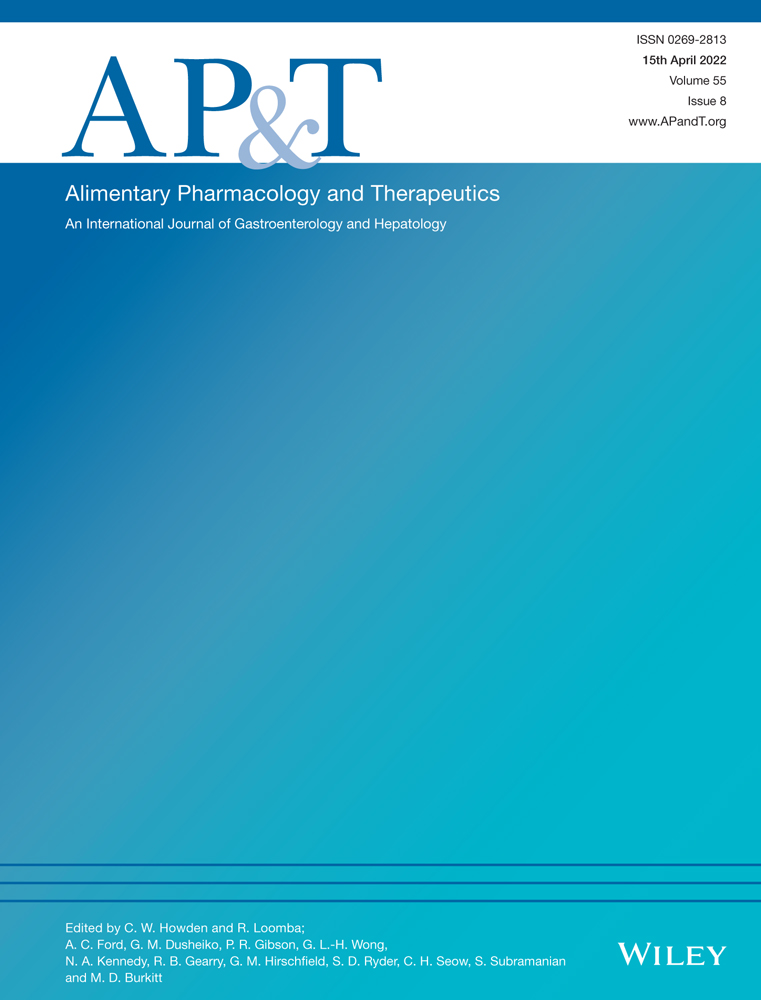Letter: serum growth differentiation factor 15 predicts hepatocellular carcinoma occurrence after hepatitis C virus elimination
LINKED CONTENT
This article is linked to Myojin.et al's paper. To view this article, visit https://doi.org/10.1111/apt.16691 and https://doi.org/10.1111/apt.16862.
We read with great interest the article ‘Serum growth differentiation factor 15 predicts hepatocellular carcinoma occurrence after hepatitis C virus elimination’ by Myojin.et al.1 The authors have studied serum growth differentiation factor 15 (GDF-15) and GDF-15/AFP/FIB-4 combination model to predict HCC occurrence in patients with chronic HCV infection without a history of HCC who had achieved sustained virological response (SVR) with direct-acting antiviral agents (DAAs). After reading the article carefully, we want to raise the following points.
First, the study enrolled 1606 patients from 20 medical centres but did not assess several risk factors which might result in significant bias, for example: medical history such as hyperlipidaemia, NAFLD/MAFLD, type II diabetes and abnormal liver nodules.2, 3 It is widely acknowledged that cirrhosis accelerates HCC progression faster than without cirrhosis, but the authors did not describe the proportion of patients with or without cirrhosis in this paper. On the other hand, GDF-15 was reported increasing in many clinical situations4 such as many types of cancer, chronic inflammatory diseases, cardiovascular and renal disease, serious infections and metformin consuming, but the above information was not mentioned in the paper which makes the results not so rigorous.
Second, GDF-15 did not show better predictive value compared with FIB-4(Figure 3). What is more, the low specificity of GDF-15 may limit its usefulness in predicting future HCC. In addition, GDF-15 test is not widely carried out in clinical practice which would aggravate patients’ financial burden beyond doubt.
Third, the authors indicated that serum GDF15 levels at the time of HCC occurrence were not significantly altered compared to those at 1 year before HCC occurrence in the paper, so we are confused about the initial screening time and applicable population to take GDF-15 or the combination model.
In summary, we agree that GDF-15 and the combination model might be promising serum markers for predicting HCC. However, it needs more comprehensive researches to improve the application in clinical practice.
ACKNOWLEDGEMENT
Declaration of personal interests: None.
FUNDING INFORMATION
This work was supported by Tianjin Key Medical Discipline (Specialty) Construction Project; Chinese Foundation for Hepatitis Prevention and Control—'Tian Qing’ Hepatitis Research Fund, No. TQGB20210175; Research project of Chinese traditional medicine and Chinese traditional medicine combined with Western medicine of Tianjin municipal health and Family Planning Commission (2015061/2017070/2021022).
AUTHORSHIP
Guarantor of the article: Liang Xu.
Authors’ contributions: Lin Chen: writing the manuscript; Xuemei Tao, Youfei Zhao and Minghui Zeng: writing and critical revision; Liang Xu and Yuqiang Mi: critical revision.
Open Research
DATA AVAILABILITY STATEMENT
Data sharing not applicable to this article as no datasets were generated or analysed during the current study




